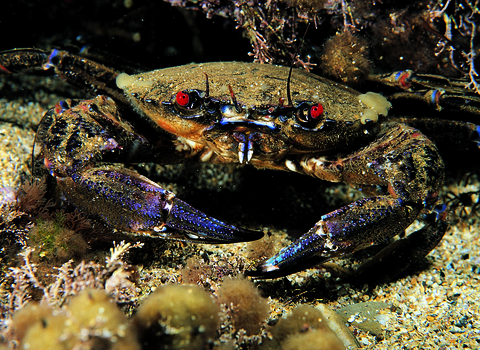
Velvet swimming crab ©Paul Naylor
Velvet swimming crab
Look out for the bright red eyes of this speedy crab in rockpools - but be careful, they're notoriously feisty and will give a painful nip!
Scientific name
Necora puberWhen to see
January to DecemberSpecies information
About
The velvet swimming crab comes exactly as advertised. Their body is covered in short hairs that give a velvet appearance and are soft to the touch, just like velvet. Like all swimming crabs, their rear-most legs are flattened like paddles, helping them swim effectively. They are speedy underwater and will catch swimming prey like fish and prawns, as well as munching on easier catches like worms, clams and sea snails.If you spot a crab with a big orange mass on their underside, don't worry - those are their eggs! Females carry the fertilised eggs around with them, protecting the eggs from hungry predators. An egg-carrying female is referred to as "berried". They live in rockpools on the shore and in shallow waters below the tideline.
